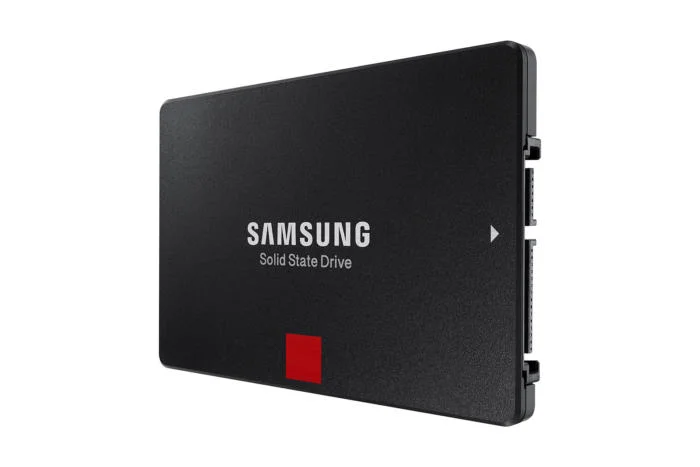These days NVMe storage drives is top choice among the PC enthusiasts and premium market laptops with good reason, they are miniature and compact, with it literally being the size of a stick of gum. More importantly, NVMe storage drives are superbly fast. Just check out the insane read/write numbers when you get a chance. Yet still you have a bevy of PC systems today outfitted with legacy SATA ports. With that said, Samsung just released a new band of SATA based solid state drives that's implemented with the company's latest 64-layer 3D NAND flash memory and brand new controller into their SSD 860 PRO and 860 EVO Series drives.
As always in this monthly edition of Hardware Breakdown we get out the virtual screw driver and crack open any particular device or hardware of interest and examine the core technology that makes it uniquely functional. As claimed by Samsung, the SSD 860 PRO is fast and reliable, lets find out why.
In cracking open the 2TB SSD 860 PRO, below the PCB you'll find 8 pieces of flash memory, a DDR4 DRAM cache and controller which is the drives core technology. Samsung MJX controller that's used is newly instituted and suppose to improve its host communication performance, also improving compatibility with Linux OS. The actual LPDDR4 cache itself will vary in size depending on the capacity of the drive, which maxes out at 4GB.
Another core technology of interest on this drive is the 64-layer 3D Vertical NAND (VNAND in short) flash memory. The NAND uses Samsung's proprietary vertical cell structure based on a 3D Charge Trap Flash (CTF) technology and uses a vertical interconnect process technology that links a 3D cell array. Infusing these technologies together, 3D V-NAND will provide much better scaling than planar NAND flash. Charge Trap Flash technology in itself is very unique. It consist of complex set of semiconductor memory circuits that is used to create a non-volatile NOR and NAND flash memory. The the technology as a whole functions differently than the more conventional floating-gate MOSFET technology using a silicon nitride to store electrons instead of using polycrytsalline silicon. This technology does have several benefits, it can process much smaller geometric's reducing cost and chip size, multiple bits can be stored on just one single flash memory cell making its more reliable, a much higher yield charge is less susceptible to any form of defects within the tunnel oxide layer, and finally, fewer process steps are required to form a single charge stored in a node.
Not only is the SSD 860 PRO constructed for the sole purpose of speed and reliability, the drive endurance rating is boosted up to 4,800 TBW on the max capacity 4 TB drive and 2,400 TBW on the 2 TB drive.




